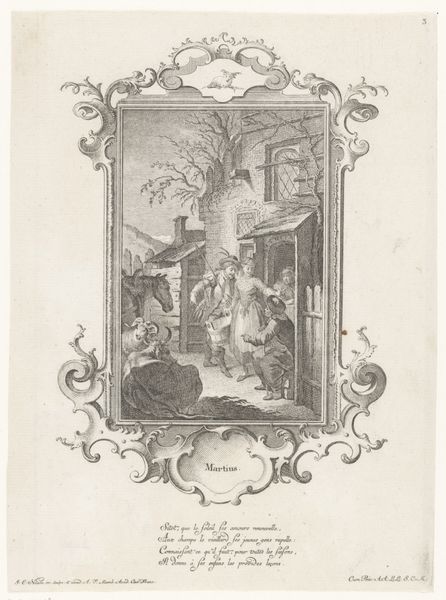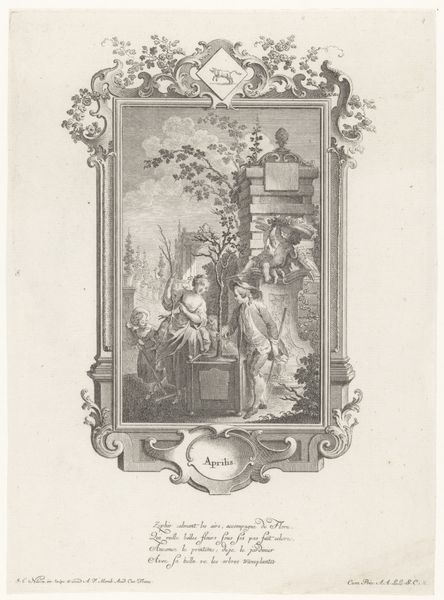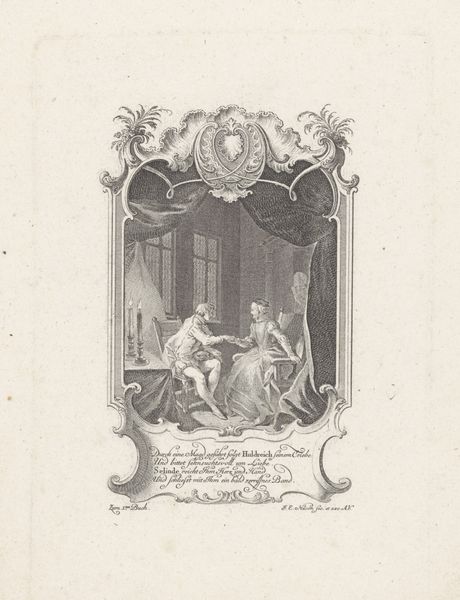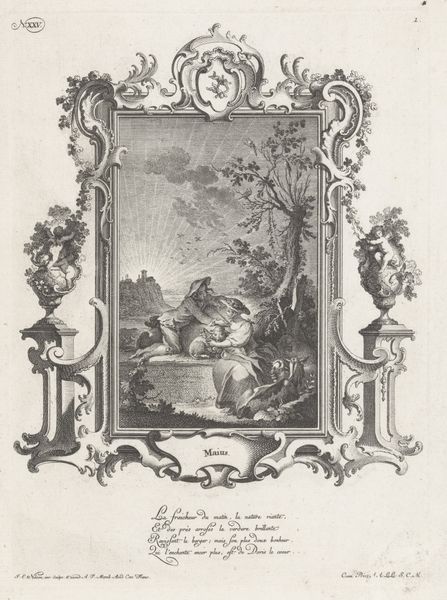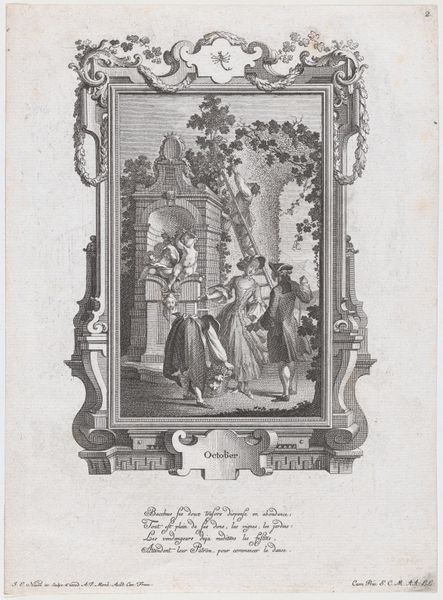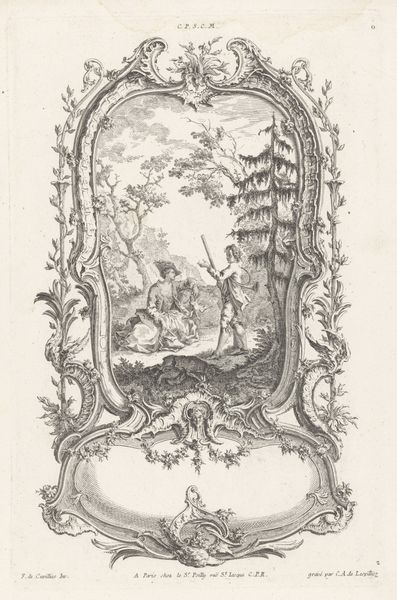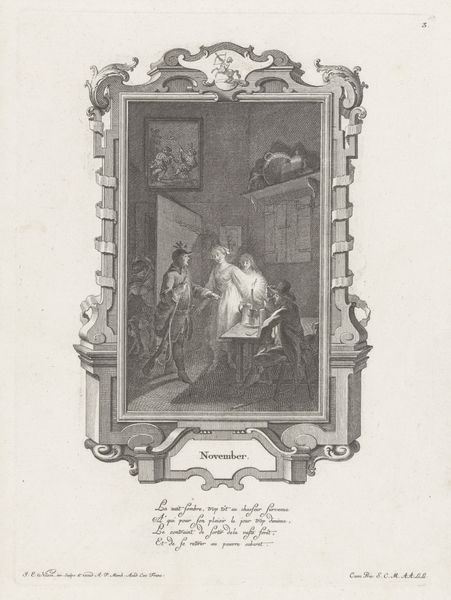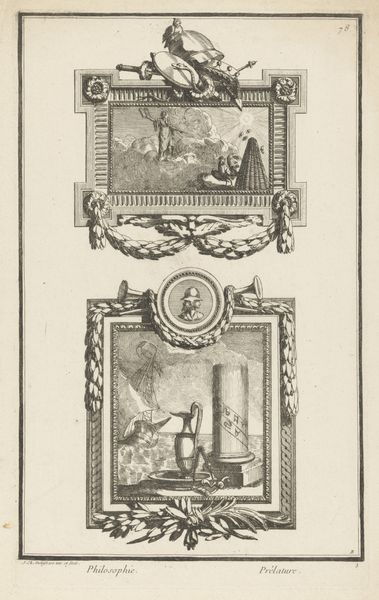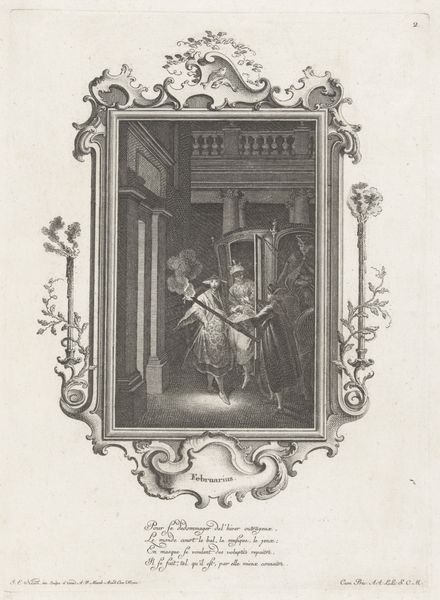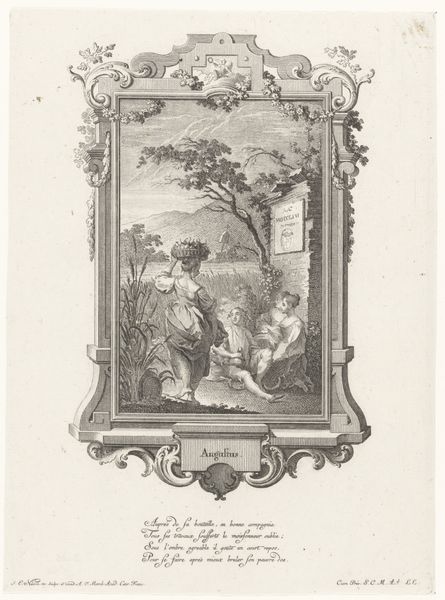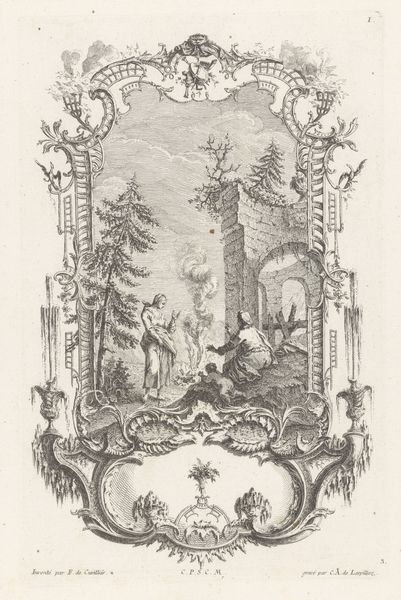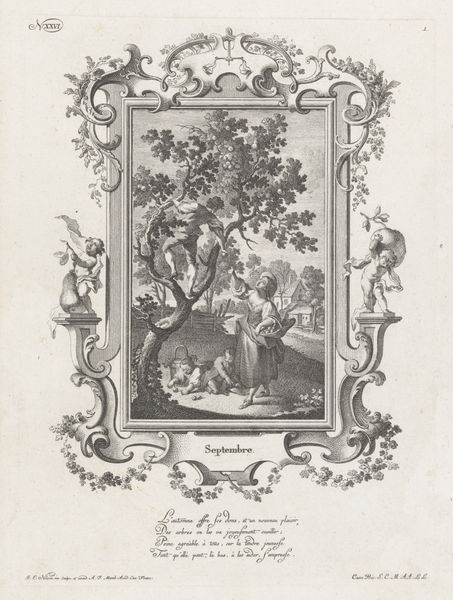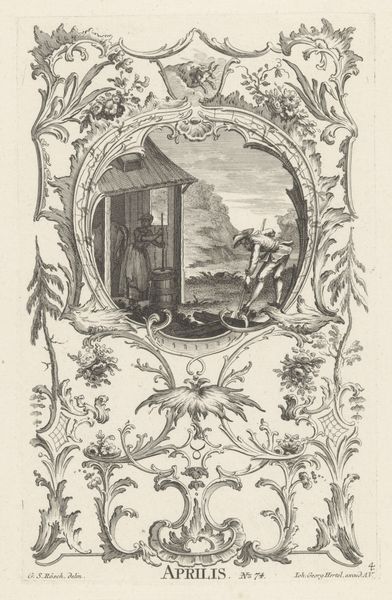
Dimensions: height 264 mm, width 194 mm
Copyright: Rijks Museum: Open Domain
Editor: Here we have Johann Esaias Nilson’s “December,” an engraving from 1766, residing at the Rijksmuseum. It's quite detailed, and the framed image evokes a sense of domesticity during the winter months. What jumps out at you when you look at this print? Curator: It's fascinating to consider this work through a materialist lens. Engravings like these were products of a very specific and demanding labor process, involving specialized skills and tools. Consider the societal context: this wasn't just about creating an image, but about reproducing and disseminating it. Who was the intended audience, and what access did they have to the materials and processes depicted? Editor: So, you're suggesting we think about who could afford this kind of print, and what that says about the people it depicts? Curator: Exactly. The print visualizes a gathering; yet, the image itself became a commodity. How does that affect our interpretation? Furthermore, the labor of creating the engraving often goes unacknowledged while the artist garners attention. Consider the engraver’s skill. Each line, each mark, represents physical and intellectual labor. It transforms raw materials into an accessible, reproducible image. Where does that fit into the typical art historical narrative? Editor: That’s an interesting point – thinking about the usually unseen work behind the scenes. So the circulation of prints became this early form of mass media… Curator: Precisely. How did prints like this shape perceptions of everyday life and seasonal activities? Whose story is not told? Do the conditions of production amplify or distort the narrative of 'December' represented within the image itself? Editor: I never considered how the labor of creating and consuming this image shapes the picture itself. Curator: Indeed. By focusing on the materials, production and the social conditions surrounding “December,” we can move beyond conventional readings and toward a deeper understanding of its place within a broader cultural landscape.
Comments
No comments
Be the first to comment and join the conversation on the ultimate creative platform.
